What’s the deal with chard? Get the down low on all things chard in this spotlight post. What it is, how it tastes, how to use it, and more!
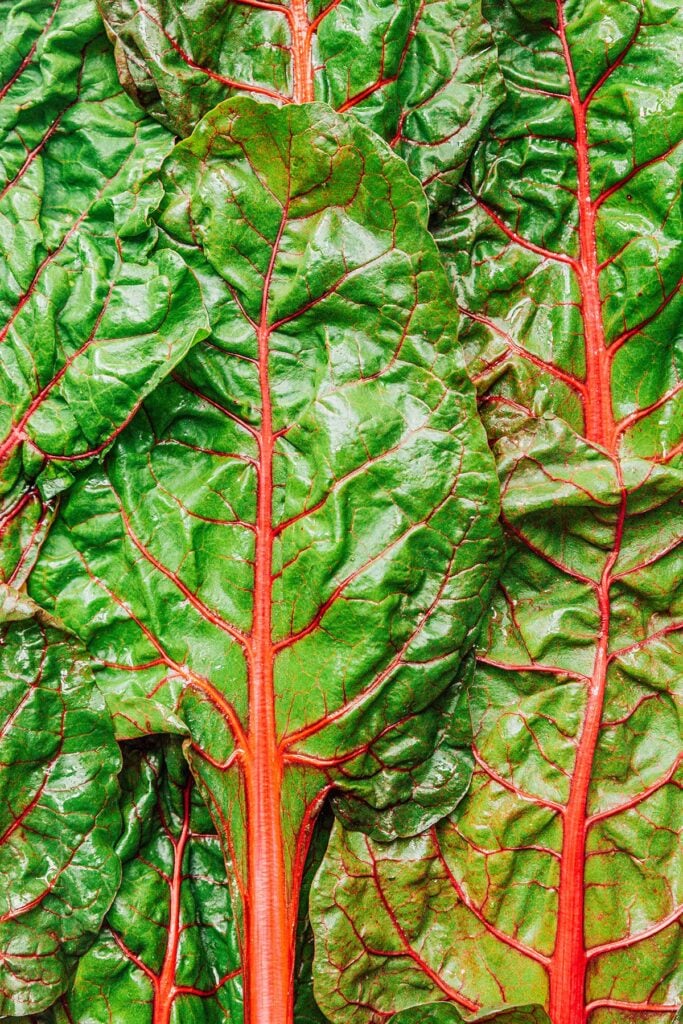
We’ve all heard of chard, but there is a surprisingly large number of people who have never tried it! And when you think about, what is it? Lettuce? Not quite. Cabbage? Not that either. Though it’s a part of the leafy green family, chard is actually its own ballgame, similar to how spinach is spinach and kale is kale. They’re not technically lettuce, but they’re greens.
Today, we’re giving chard the spotlight and looking at it in depth. What you need to know, how to prepare it, and so much more. After this, you’ll be able to enjoy it like a true leafy green connoisseur! Let’s dive in.
When is Chard in season?
With a variation called “Swiss chard,” you may be guessing that it comes from Switzerland. That’s actually not true! Chard comes from the Mediterranean region, but these days you’ll find it grown in the states as well. After being planted, it’s about a 3.5 month window before harvesting takes place. It’s a spring veggie!
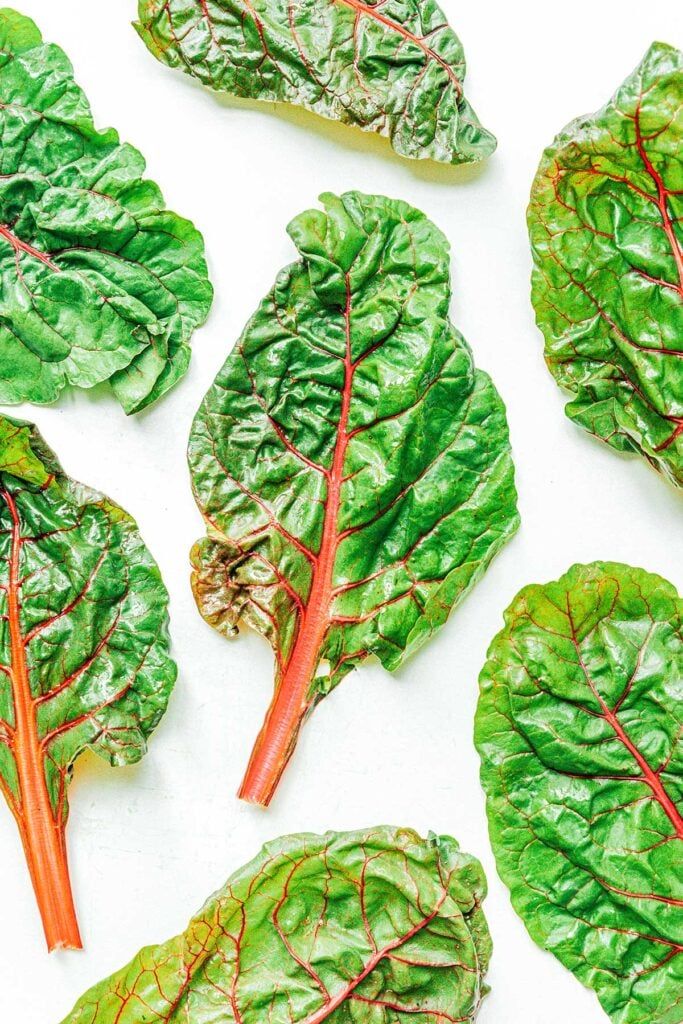
Chard vs. lettuce & greens
Alright, so if chard isn’t technically a lettuce, what is it? Chard is in the chenopodiaceae fam, which means it’s in the same category as spinach… and beets! Interesting, huh? Nutritionally, chard stacks up in the middle with lettuce and fellow greens, holding higher nutrients than some strains (like iceberg), but slightly less than others (like spinach).
Chard variations
Chard comes in more than just green with red veins… There are actually quite a few types!
- Green: Green chard is the most common variety. This version is mild in taste and works well in any dish that calls for greens!
- Rainbow: Also called “bright lights” chard, this multi-colored variation features pink, yellow, orange, and red stalks. It’s one of the most colorful veggies! The leaves are firm and the taste is muted and earthy.
- Red: Red chard has green leaves but deep red or purple stalks. It’s often referred to as “Swiss” chard, but don’t be fooled — it doesn’t come from Switzerland!
- Barese: Barese chard features green leaves and white stems. This type of chard can be eaten early (as baby leaves), or at full harvest.
- Orange Fantasia: Orange chard is just what you’d expect – green leaves with orange stems! This variation grows to nearly 20 inches tall and keeps its bright color when cooked!
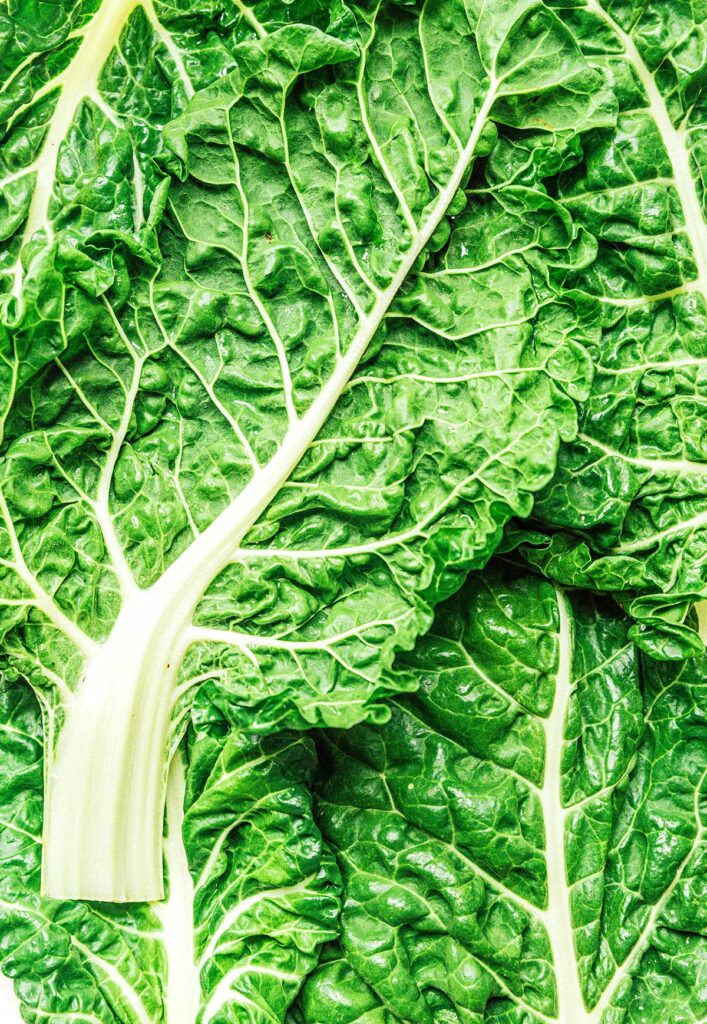
Benefits of chard
Chard truly serves up the nutrients. Just one cup has 2x your daily serving of Vitamin A, as well as hefty amounts of Vitamins C, E, K, calcium, potassium, iron, and even fiber. These nutrients are great for supporting heart health, blood sugar, and more.
How to use chard
Chard can be used in recipes either raw or cooked. The raw leaves are delicious in salads and particularly cold recipes (like smoothies!).
For cooked chard recipes, you can use the entire leaves, or you can remove the stems. It’s sometimes easier to just remove the stems since they take longer to cook. One option is to cook the stems and leaves separately so you don’t wind up with overcooked leaves or undercooked stems.
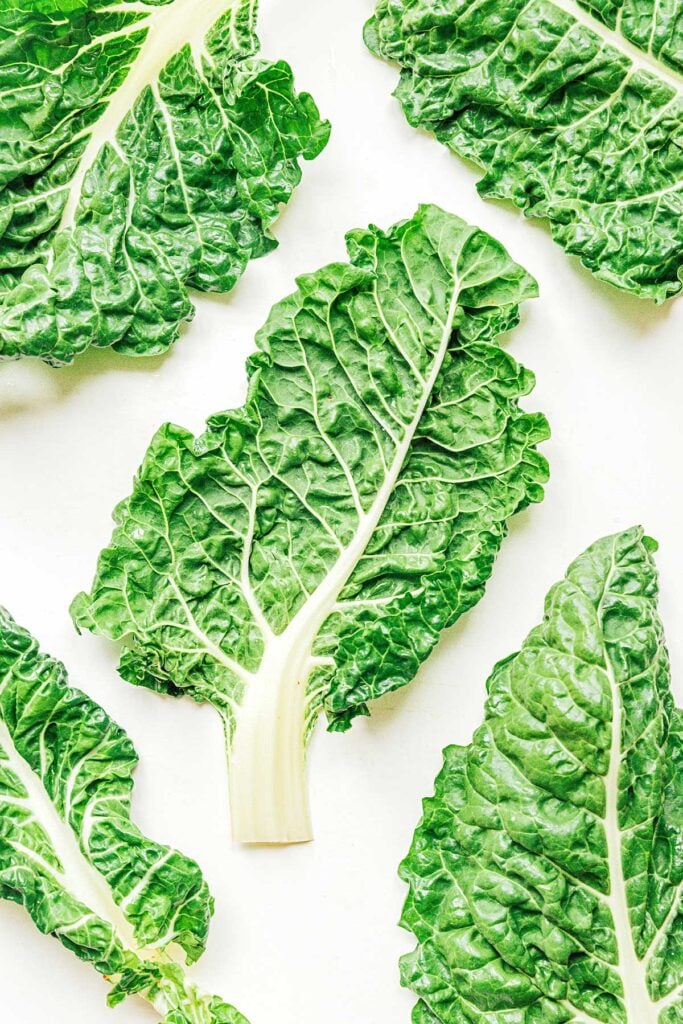
What it tastes like
Though each variation of chard tastes slightly different, the overarching theme is that it tastes mild, earthy, slightly sweet, and sometimes subtly bitter. The bitterness tends to go away if the chard is cooked. It’s sort of like spinach, but a bit different. The only way to truly understand is to try some!
How to prep it
Chard can be prepped much like lettuce. Start by removing each leaf and washing thoroughly. It is recommended to remove the stem by cutting it off vertically (see below). From there, cut or leave your chard in tact depending on the menu! If cutting, slice horizontally into strips. You can also keep the leaves intact, perfect for wraps or including on sandwiches!
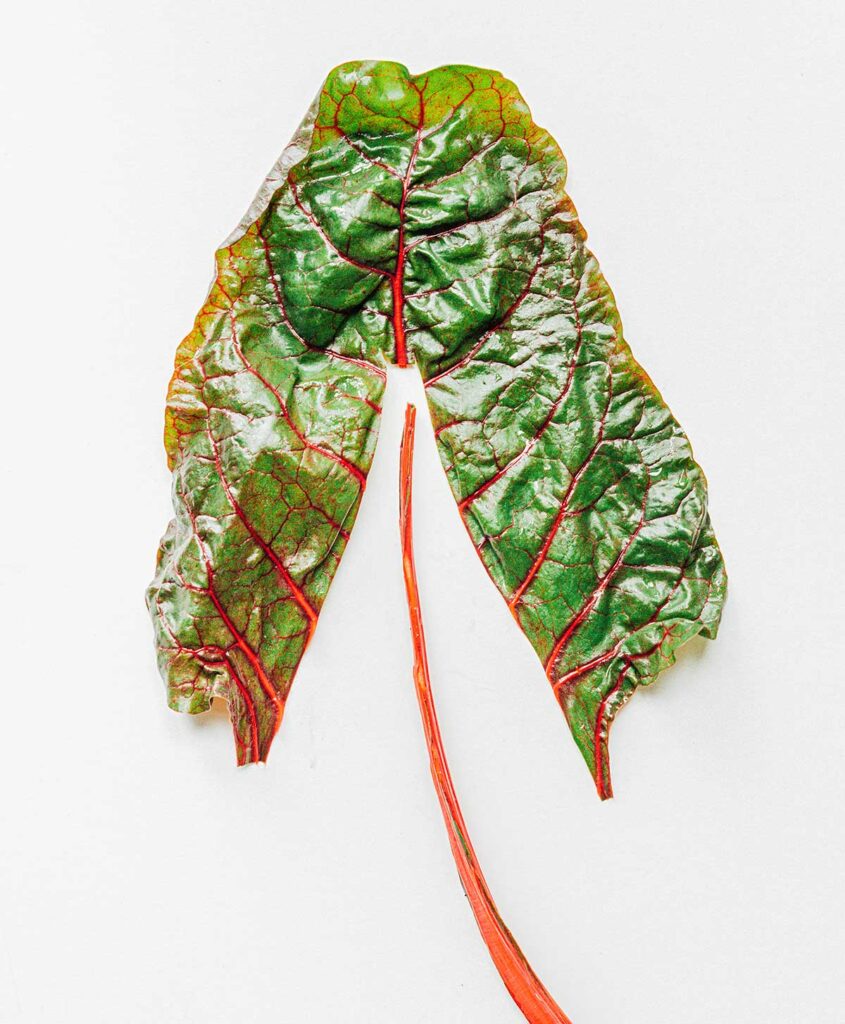
Recipes With Chard
Chard is like lettuce in that you can use in approximately 1 million different ways. It tastes delicious in everything from smoothies, salads, and soups, to salad dishes, hummus, and even scrambled eggs! Because it can be eaten raw or cooked, the options list is double long.
One of my favorite ways to use chard is in chard wraps. These yummy, nutrient-rich wraps are great for filling with your favorite salad like Chickpea Tuna, Street Corn, or a Veggie Salad mix.
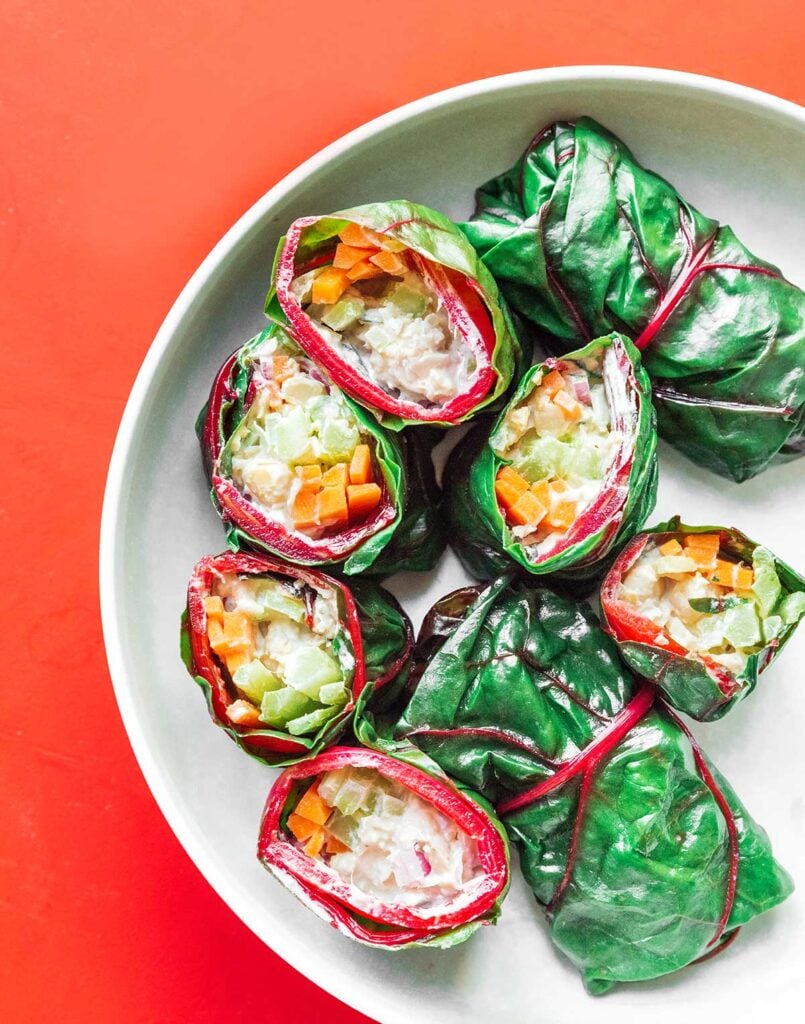
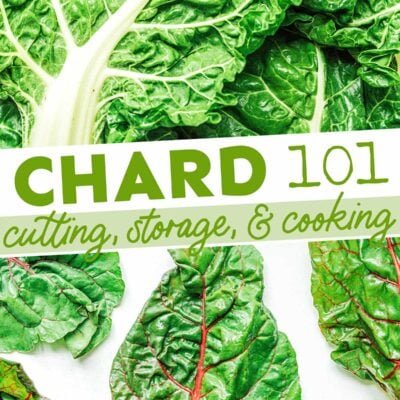
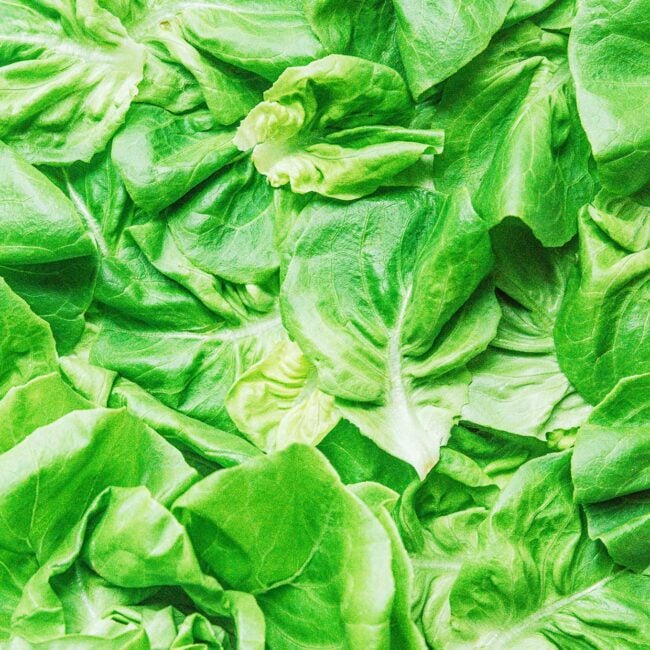
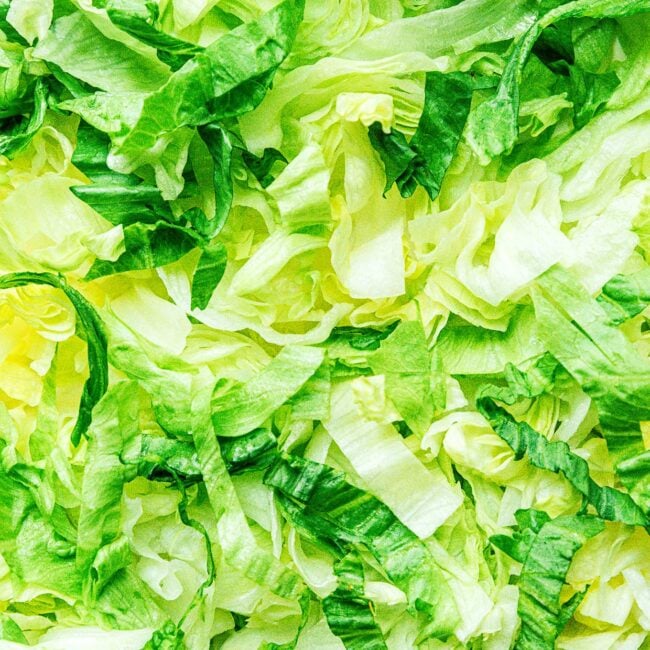
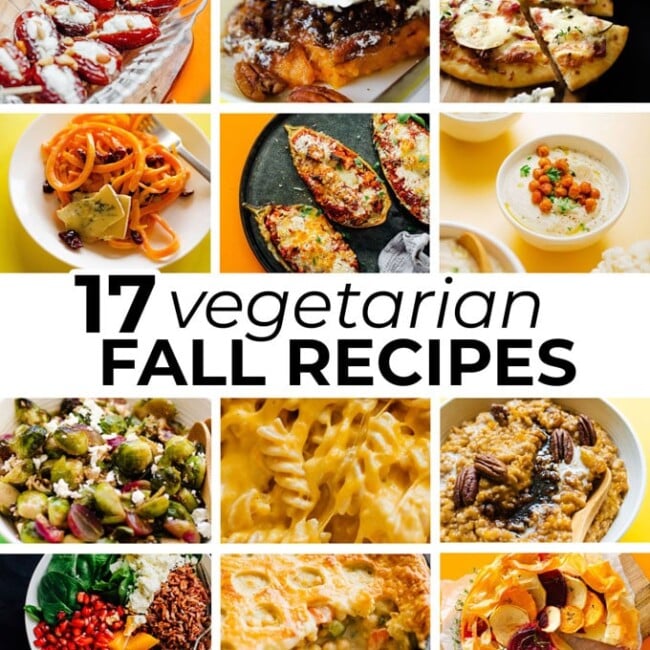
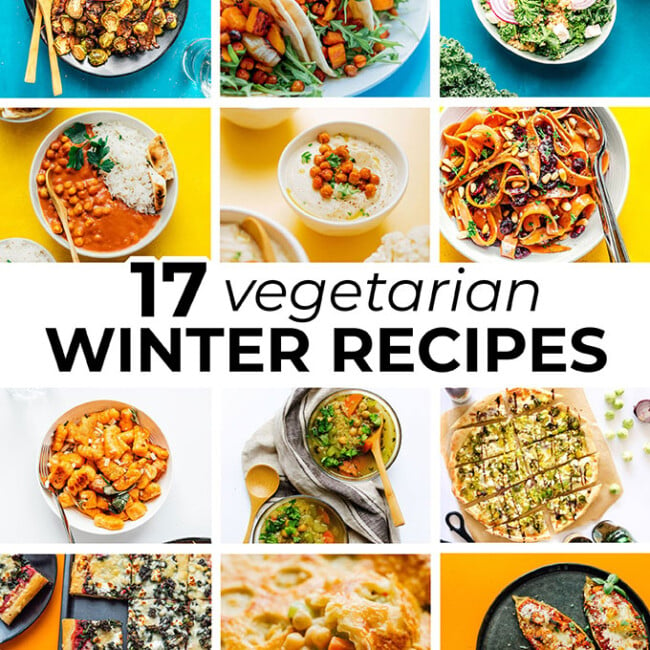
TJ Dellinger says
I love chard: it is more bug-resistant and handles heat better in my garden than most leafy vegetables. Our favorite way to eat it is scrambled, with eggs!
Looking forward to trying the wraps!
Glora Lugo says
I am definitely going to try chard on some wraps. Thanks for the suggestions.
Sarah Bond says
Yes! It’s such a fun and healthy swap. Enjoy! 😀